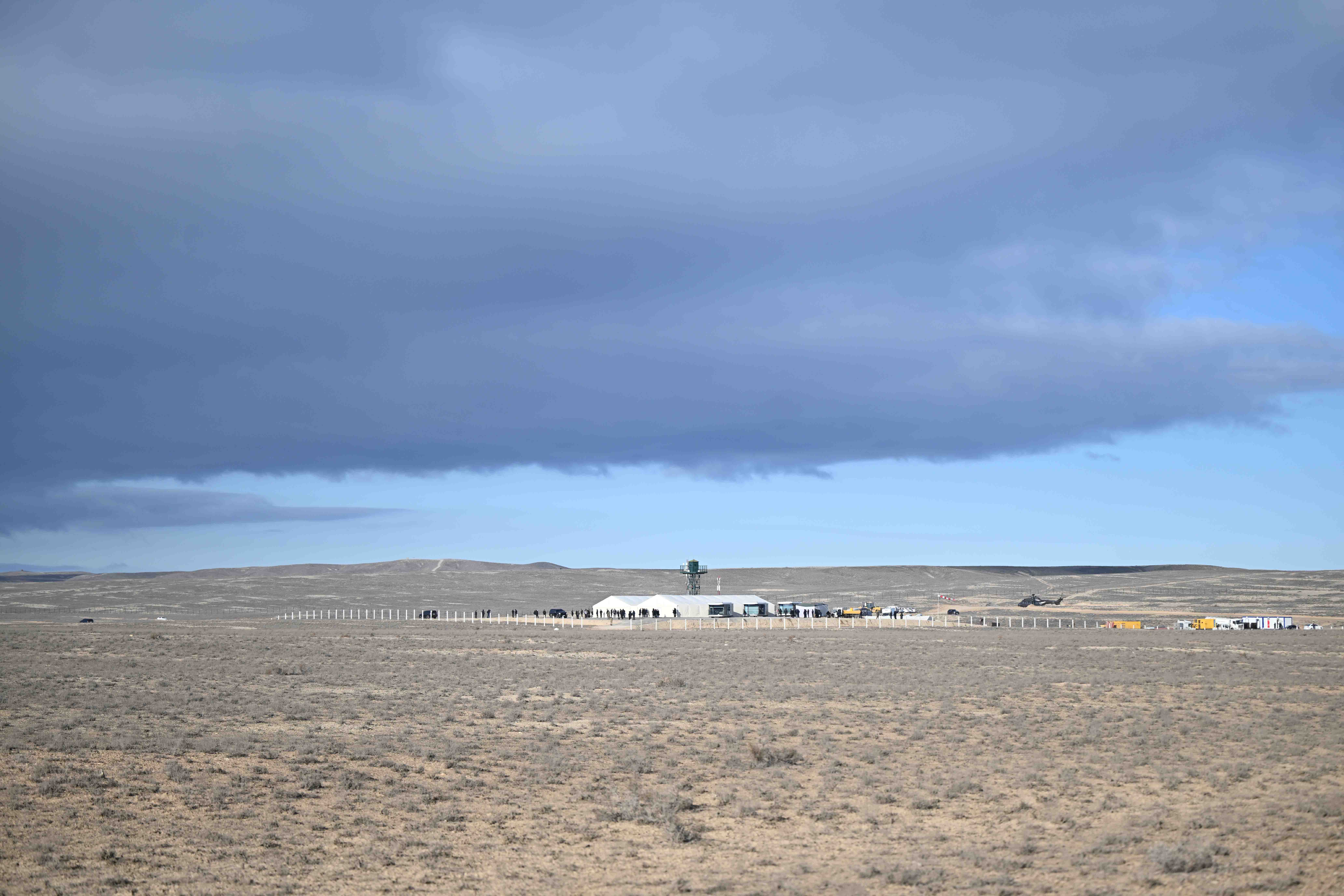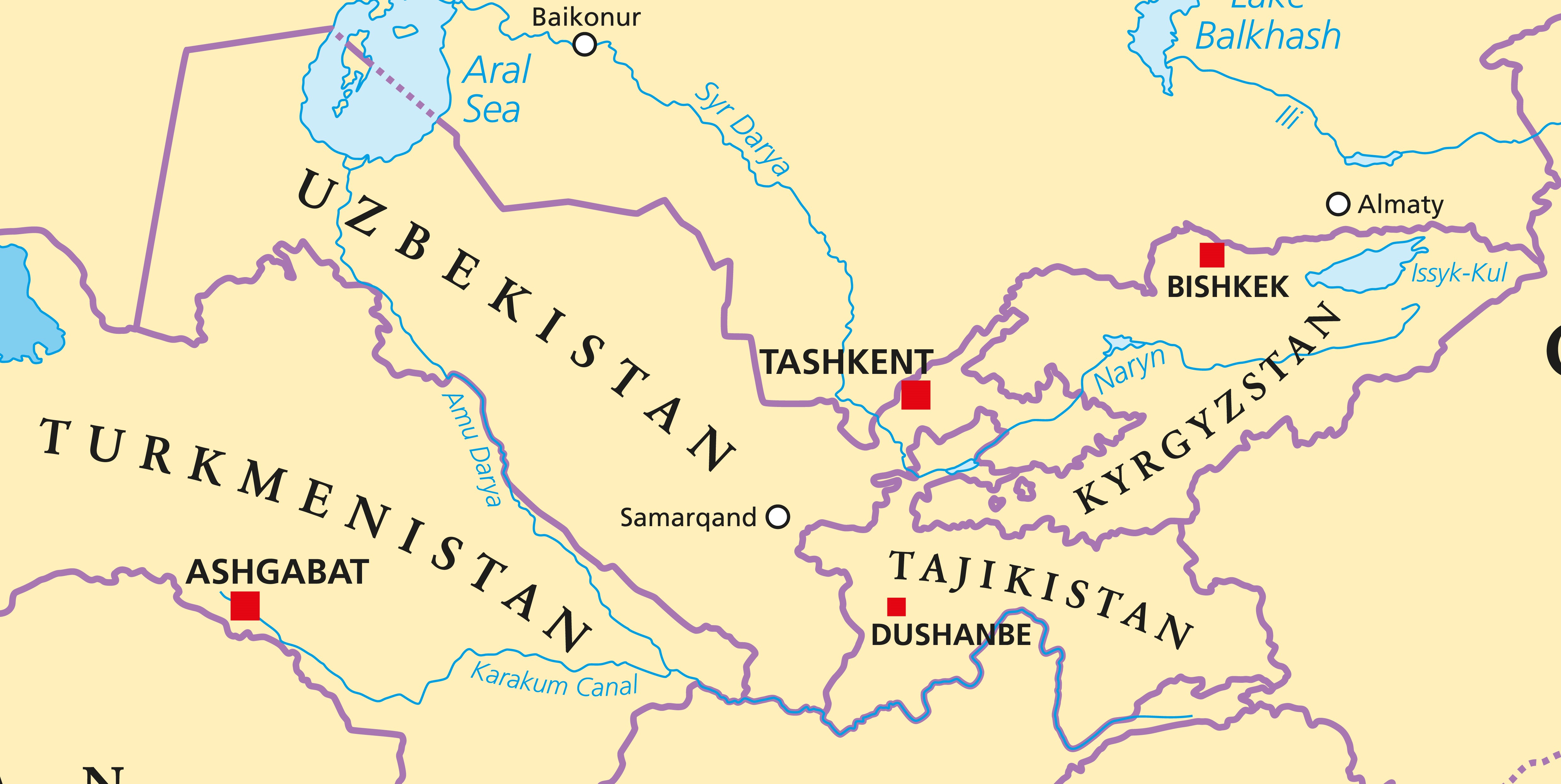Kyrgyzstan, Tajikistan, and Uzbekistan held a trilateral meeting on January 8, marking the significant progress made on settling the borders between the three Central Asian neighbors.
Adylbek Kasymaliev, the new head of the Cabinet of Ministers of Kyrgyzstan, met with his counterparts, Tajik Prime Minister Kokhir Rasulzoda and Uzbek Prime Minister Abdulla Aripov.
According to a Kyrgyz government readout, “The prime ministers of the three countries emphasized that the countries have great potential for strengthening cooperation in key areas such as trade, logistics, water and energy, and cultural and humanitarian ties.” The statement also cited “the development of cross-border and interregional cooperation” as critical.
The three countries’ prime ministers met at the junction where Kyrgyzstan’s Batken Region, Tajikistan’s Sughd Region, and Uzbekistan’s Fergana Region come together. They gathered in a tent that appeared to have been specifically constructed for the meeting.

The junction where Kyrgyzstan’s Batken Region, Tajikistan’s Sughd Region, and Uzbekistan’s Fergana Region meet. Photo: Kyrgyzstan Cabinet of Ministers
Following the 1991 collapse of the Soviet Union, Central Asia’s borders became international boundaries. As the newly independent states of the region strived to define themselves, and in particular establish their sovereignty, the crooked borders of the Fergana Valley became a point of contention, and violence.

Uzbekistan, Kyrgyzstan, and Tajikistan. Map from Depositphotos.
For example, in 2015 – incidentally not too far from the spot where the three prime ministers met in 2025 – an Uzbek border guard reportedly shot and killed a 22-year-old Kyrgyz man attempting to smuggle potatoes out of Sokh district, an exclave of Uzbekistan surrounded completely by Kyrgyz territory whose population is mostly ethnic Tajiks.
At the time, Kyrgyzstan and Uzbekistan had delimitated around 70 percent of their border but relations between the two were not, then, conducive to making further progress.
The death of Uzbekistan’s long-time President Islam Karimov in 2016 opened a door that had been closed. One of Shavkat Mirziyoyev’s first acts as president following his ascension to the office was to dial down tensions with Kyrgyzstan. In the years since, while some parts of his reform push have fallen to the wayside or eroded, Uzbekistan’s commitment to regional cooperation has only intensified.
Although not without domestic contention, in late 2023 Uzbekistan’s and Kyrgyzstan’s presidents signed a final border deal into law. The following month, in January 2024, Mirziyoyev traveled to Bishkek to mark the process completed.
With the Kyrgyzstan-Uzbekistan border issues settled, attention turned to the Kyrgyz-Tajik border, which in recent years – 2021 and 2022 – witnessed significant violence that had escalated beyond civilian-on-civilian clashes to involve border forces, mortars and drones.
In early December 2024, after months of alternating negotiation meetings, Kyrgyzstan and Tajikistan announced that they had come to an agreement. In the following week, they announced that they had completed a draft description of the border.
The two sides are working on preparing final documents; those are expected to be completed in January, after which we can expect legislative ratification in Bishkek and Dushanbe and presidential signatures, likely with some celebratory fanfare.
The Kyrgyz government’s readout of the recent prime ministerial trilateral mentioned in vague terms a meeting of their respective heads of states in the future, which “will contribute to the development of good-neighborly relations and multifaceted partnership between the fraternal countries.”
The signing of agreements is not the end of the journey, but it’s an important milestone and a testament to the earnest efforts on the part of regional officials and leaders at regional cooperation.

































